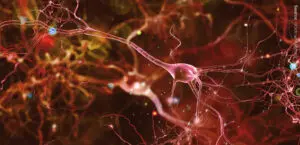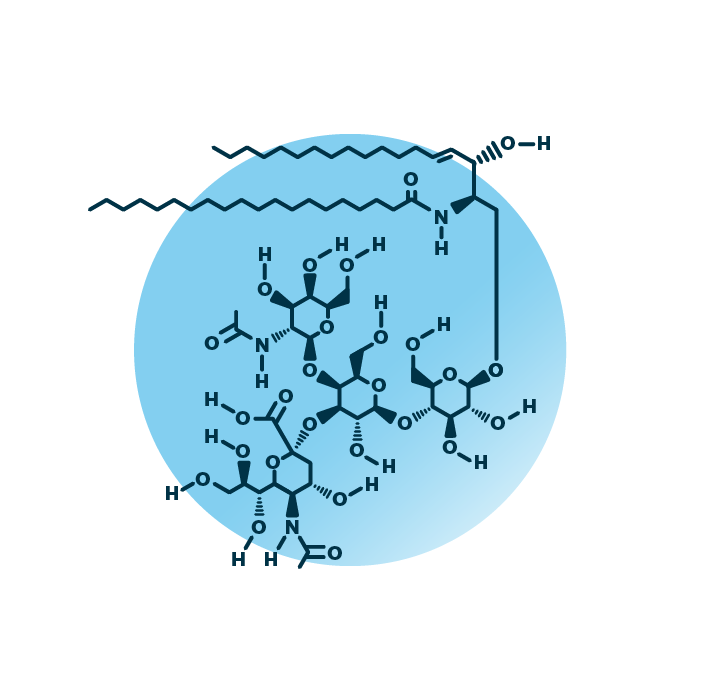About the structure and biological function of GM2
Structure. GM2 ganglioside lipids belong to the group of gangliosides within the sphingolipids. Their structure consists of a ceramide backbone linked to an oligosaccharide unit made of four sugar molecules. One of them is a sialic acid. The ceramide backbone contains two hydrocarbon chains: a long-chain base which is linked to a fatty acid via an amide bond. The fatty acid and the long-chain base can be of variable length, hydroxylated, and contain double bonds.
Function. GM2 gangliosides are components of the cell membrane and may suppress malignant properties of various cancers. The mechanism is suggested to be due to complex formation at the cell surface with membrane proteins. Genetic defects leading to accumulation of GM2, due to increased lysosomal storage cause Tay-Sachs, Sandhoff and AB variant disease. Further, GM2 lipids bind to a toxin secreted by Clostridium perfringens.


